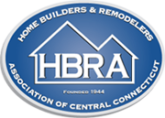Video Toolbox Talks are short videos and accompanying handouts that present relevant and timely information on safety hazards in the residential construction industry. Each Video Toolbox Talk explains how to recognize, abate, and prevent construction specific safety hazards through the use of techniques including best industry practices and OSHA regulatory requirements.
Working in construction can be dangerous: employees can be exposed to hazards such as falls, powered and heavy equipment, and harmful chemicals. Before you step on the jobsite, be familiar with the basic safety hazards and understand how to protect yourself.
Preparing a jobsite before a disaster plays a vital role in ensuring that workers stay safe.
Wood framing, the most common framing for homes in the U.S., presents multiple areas of concern for worker safety.
Home builders, contractors and workers should know the signs of substance misuse on the jobsite, and how to steer colleagues to get help should they need it.
Although access to sanitary restrooms and hand washing sinks can be challenging on some construction sites, working to provide safe and clean jobsites should be a top priority for contractors.
Working in trenches and excavations is among the most hazardous construction operations and trench cave ins or collapse pose a serious threat to workers lives.
Many home building workers are exposed to electricity as part of their daily responsibilities.
With the automobile fatality trends increasing, it’s important to understand the dangers of driving and how to safely commute to and from work each day.
Every worker on the jobsite should have and use the appropriate PPE. It helps reduce exposure to a variety of hazards while working on the jobsite such as protecting against sharp edges, falling objects, flying sparks, and chemical splashes.
Scaffolding Safety (English) Scaffolds, or temporary work platforms, can provide a safe and more efficient way to work in construction, but the use of scaffolds is also one of the leasing causes of injury.
Chemicals are found all over the jobsite and some of them are more hazardous than others. Container labels and safety data sheets will give you information about the hazards of materials you work with.
Pneumatic nailers, more commonly referred to as “nail guns,” have certainly made work more efficient but their speed and power has led to serious injuries on the job. Nail guns are a leading cause of injury for carpenters and responsible for an estimated 25, 000 work-related emergency room visits each year.
Understand how to work safely with this common mineral that can lead to respiratory disease.
Because construction materials are often heavy and awkward, you should pay special attention to moving them by hand or with the help of a crane or forklift.
Approximately 20% of work-related fall injuries involve ladders, and among construction workers, an estimated 81% of fall injuries treated in hospital emergency rooms involve a ladder.
Nearly all construction sites have unprotected sides and edges, wall openings or floor holes at some point, which pose a hazard to the workers moving around the jobsite.
Good housekeeping is not only about keeping a clean jobsite; it lays the foundation for accident and fire prevention.
Falls to a lower level from walking areas or working surfaces are among the most common causes of work-related injuries and deaths in the construction industry.
Protecting all construction workers will depend on following basic infection prevention measures such as practicing good personal hygiene and following jobsite safety practices to prevent the spread of the virus.
Construction workers sometimes perform work in confined space – work areas that are enclosed and have a restricted means of entry or exit that may present dangerous and hazardous conditions.


